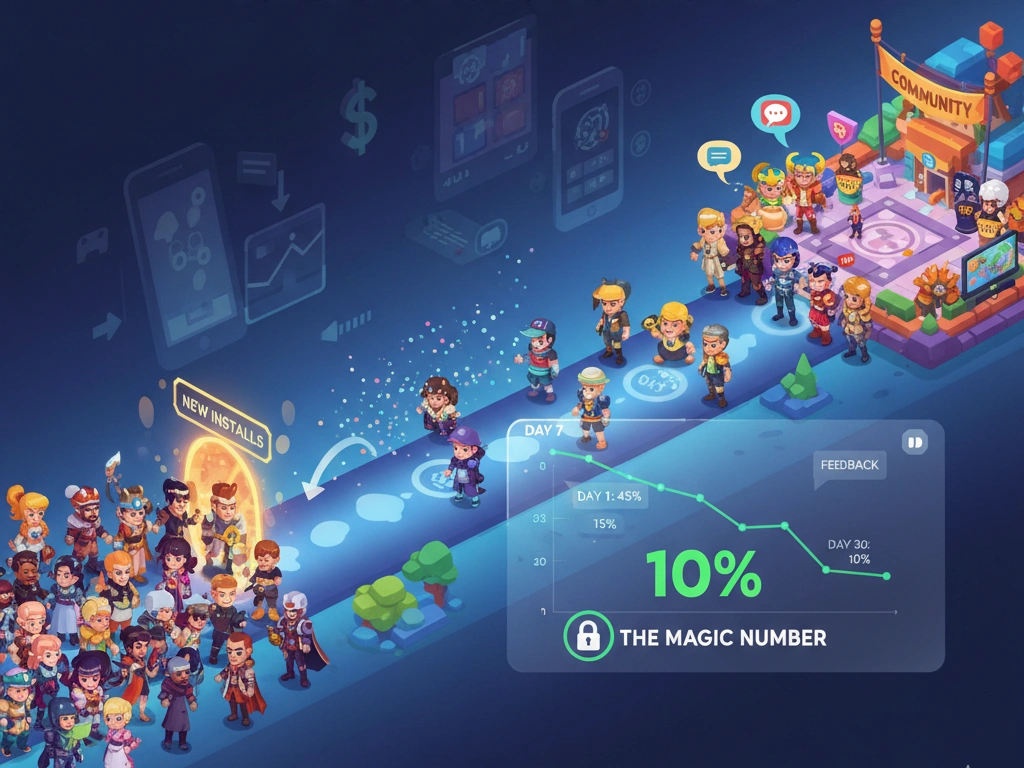Player Retention: The Real Game Behind the Game
Player retention drives game success by keeping players engaged through smart design, fresh content, and community connection.
By Tim Uhlott|Last updated: November 1, 2025|6 minutes read
game developmentplayermarket

Ever played a game you couldn’t put down? The kind that keeps whispering, “Just one more level”? That’s not luck. That’s player retention at work.
Retention is what separates a viral hit from a forgotten app. It’s the secret sauce that keeps players coming back long after launch day hype fades.
Let’s talk about what good retention looks like, why it matters, and how to actually build it.
A 10% Day 30 retention rate is the magic survival number. If your game drops below that, your player base leaks faster than you can replace it.
Casual mobile games often see steep drop-offs, around 28% on Day 1. Hardcore or strategy genres do better, even they are constantly battling customer loss.
For premium titles, higher retention is expected. That’s the sunk-cost effect in action. When someone’s already paid, they’ll usually give your game more time to win them over.
What’s a “good” retention rate?
Retention rates are usually measured by how many players stick around on Day 1, Day 7, and Day 30 after installing the game. Here’s what the numbers generally look like across platforms:| Platform / Model | Day 1 | Day 7 | Day 30 | Notes |
|---|---|---|---|---|
| Free-to-Play (Mobile) | 35–50% | 10–20% | 5–10% | Casual games drop off faster; hardcore titles perform better |
| Premium (PC / Console) | 50–60%+ | 20–30% | 10–20% | Players are more “invested” after paying upfront |
| Minimum Viable Retention | - | - | 10% | Anything lower = not sustainable |
Why retention matters more than installs
Let’s be honest, downloads look great on a slide deck, but they don’t pay the bills. Engagement does. Keeping players is way cheaper than constantly chasing new ones. And high retention brings a bunch of other perks:- Stronger community. Active players attract more players. Nobody likes empty lobbies.
- Steadier revenue. Loyal players spend more, more often.
- Better feedback. Long-term players actually tell you what’s working.
- Free marketing. Word-of-mouth from happy players beats any ad campaign.